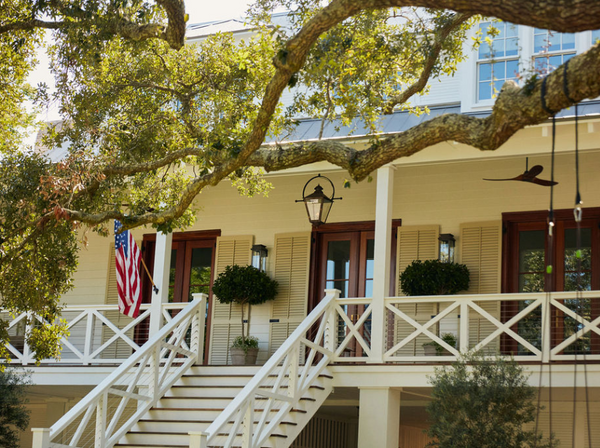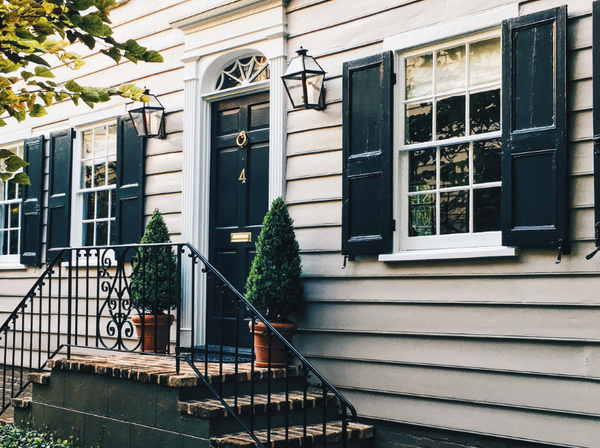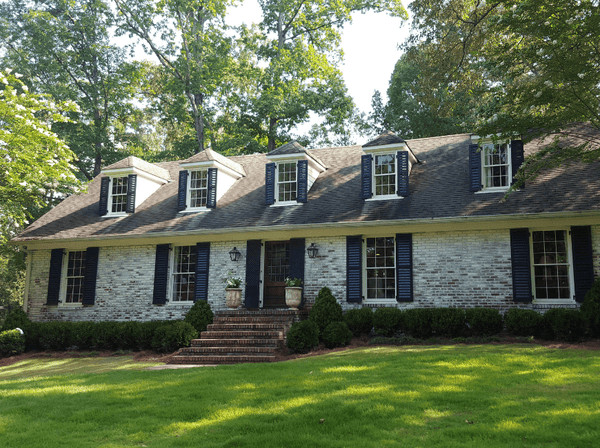Mid rails frequently appear on our best-selling shutters — but what makes them so appealing? Ahead, we’re diving into everything you need to know about mid rails and what they bring to table.
What is a mid rail?
Mid rails (sometimes called “divider rails”) are the fixed horizontal structures within a shutter that divides it into multiple sections. Usually, they’re about the height of two shutter louvers combined, but styles and sizes do vary.
They appear frequently on louvered shutters, both functional and non-functional, and are also popular on flat panel Shaker-style shutters. Mid rails can also be used to separate two sections of design styles. For example, in our raised panel Over Louver shutters, the mid rail offers a focal point for the eye and helps the two varying halves mesh seamlessly.

When do you need a mid rail?
If you’d like your shutters to be able to lock when closed over your window, a mid rail is a logical place to install a functioning slide bolt. However, mid rails can be used on stationary shutters too. Generally speaking, mid rails are usually included in shutters that are longer than about 70 inches in order to help stabilize the entire structure.
On interior plantation shutters, a mid rail makes sense because it allows the top half of the shutters to be opened and let light flood in while the bottom remains closed for privacy. On exterior shutters, mid rails can be used on stationary or non-stationary shutters.

Where to place a mid rail on a shutter?
When you have a mid rail on interior shutters, the placement matters a great deal in regards to practicality. If placed right at eye level, the mid rail may obstruct an otherwise lovely view when the shutters are closed over the windows. However, on exterior shutters, a mid rail is generally for decorative purposes only and won’t block your view.
As its name suggests, a mid rail typically hits at the halfway point — or middle section — of the shutters. Centered placement offers a pleasing symmetry and makes each equal section pop. That said, it’s possible to position the mid rail slightly lower or higher than halfway to accommodate louvered slats. For most shutters divided into two sections, having the mid rail align with the window’s sash lock offers a streamlined look.

Substance or style? When should you choose a mid rail?
The bottom line is that choosing to have a mid rail or not is up to your personal preference. Many homeowners love the classic look of a mid rail, while others opt for a more simplified style. The main thing to remember is to keep your mid rails at a consistent height if you do choose to have them.
If it’s style detail you’re after, shutters divided into three equal sections are also a popular choice. This design is the same idea as the mid rail, but with three vertical areas of interest — ideal if you have taller shutters.
Not sure whether or not a mid rail is right for your home? Peruse our range of exterior shutters to see which style suits you best!







